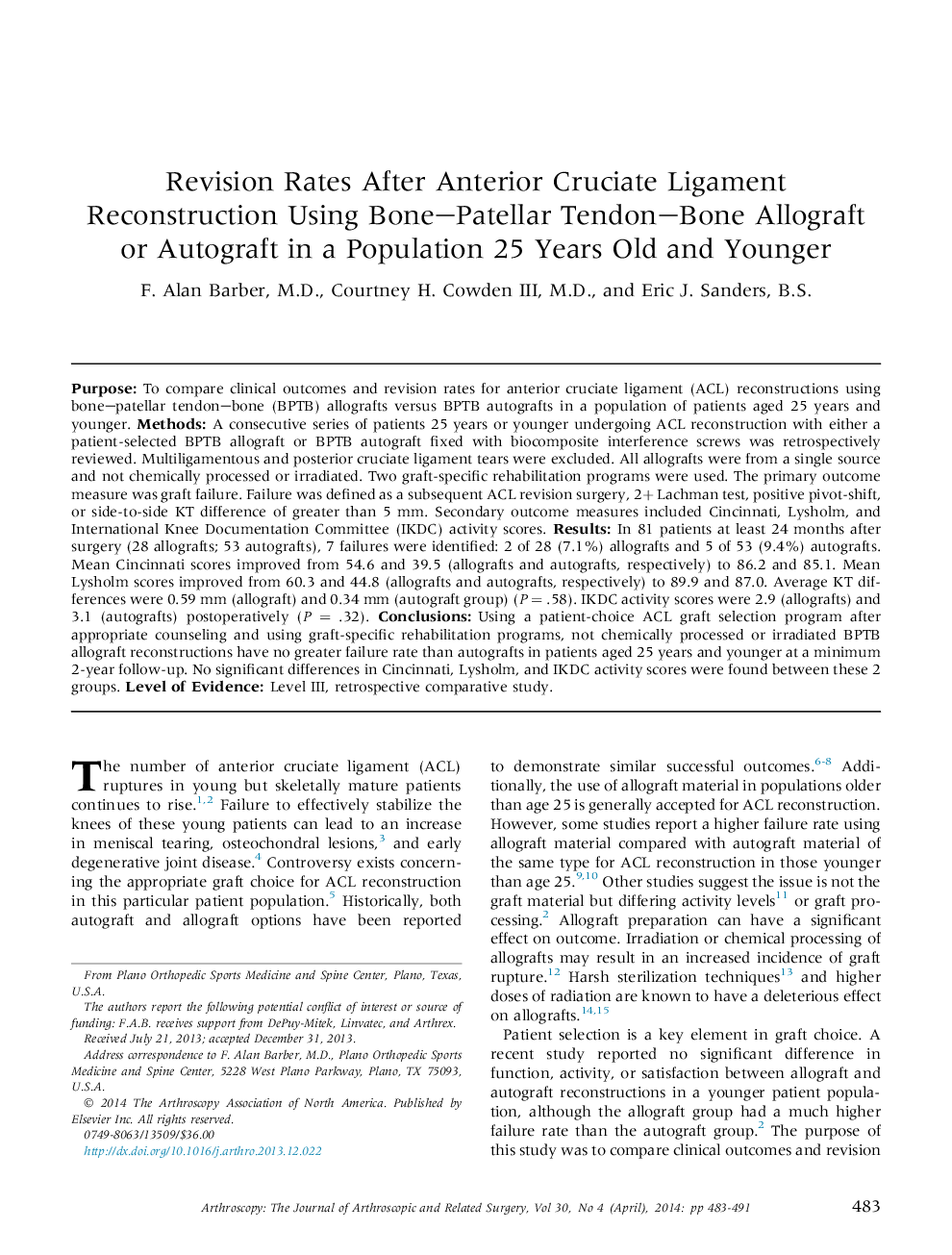| Article ID | Journal | Published Year | Pages | File Type |
|---|---|---|---|---|
| 4043147 | Arthroscopy: The Journal of Arthroscopic & Related Surgery | 2014 | 9 Pages |
PurposeTo compare clinical outcomes and revision rates for anterior cruciate ligament (ACL) reconstructions using bone–patellar tendon–bone (BPTB) allografts versus BPTB autografts in a population of patients aged 25 years and younger.MethodsA consecutive series of patients 25 years or younger undergoing ACL reconstruction with either a patient-selected BPTB allograft or BPTB autograft fixed with biocomposite interference screws was retrospectively reviewed. Multiligamentous and posterior cruciate ligament tears were excluded. All allografts were from a single source and not chemically processed or irradiated. Two graft-specific rehabilitation programs were used. The primary outcome measure was graft failure. Failure was defined as a subsequent ACL revision surgery, 2+ Lachman test, positive pivot-shift, or side-to-side KT difference of greater than 5 mm. Secondary outcome measures included Cincinnati, Lysholm, and International Knee Documentation Committee (IKDC) activity scores.ResultsIn 81 patients at least 24 months after surgery (28 allografts; 53 autografts), 7 failures were identified: 2 of 28 (7.1%) allografts and 5 of 53 (9.4%) autografts. Mean Cincinnati scores improved from 54.6 and 39.5 (allografts and autografts, respectively) to 86.2 and 85.1. Mean Lysholm scores improved from 60.3 and 44.8 (allografts and autografts, respectively) to 89.9 and 87.0. Average KT differences were 0.59 mm (allograft) and 0.34 mm (autograft group) (P = .58). IKDC activity scores were 2.9 (allografts) and 3.1 (autografts) postoperatively (P = .32).ConclusionsUsing a patient-choice ACL graft selection program after appropriate counseling and using graft-specific rehabilitation programs, not chemically processed or irradiated BPTB allograft reconstructions have no greater failure rate than autografts in patients aged 25 years and younger at a minimum 2-year follow-up. No significant differences in Cincinnati, Lysholm, and IKDC activity scores were found between these 2 groups.Level of EvidenceLevel III, retrospective comparative study.
